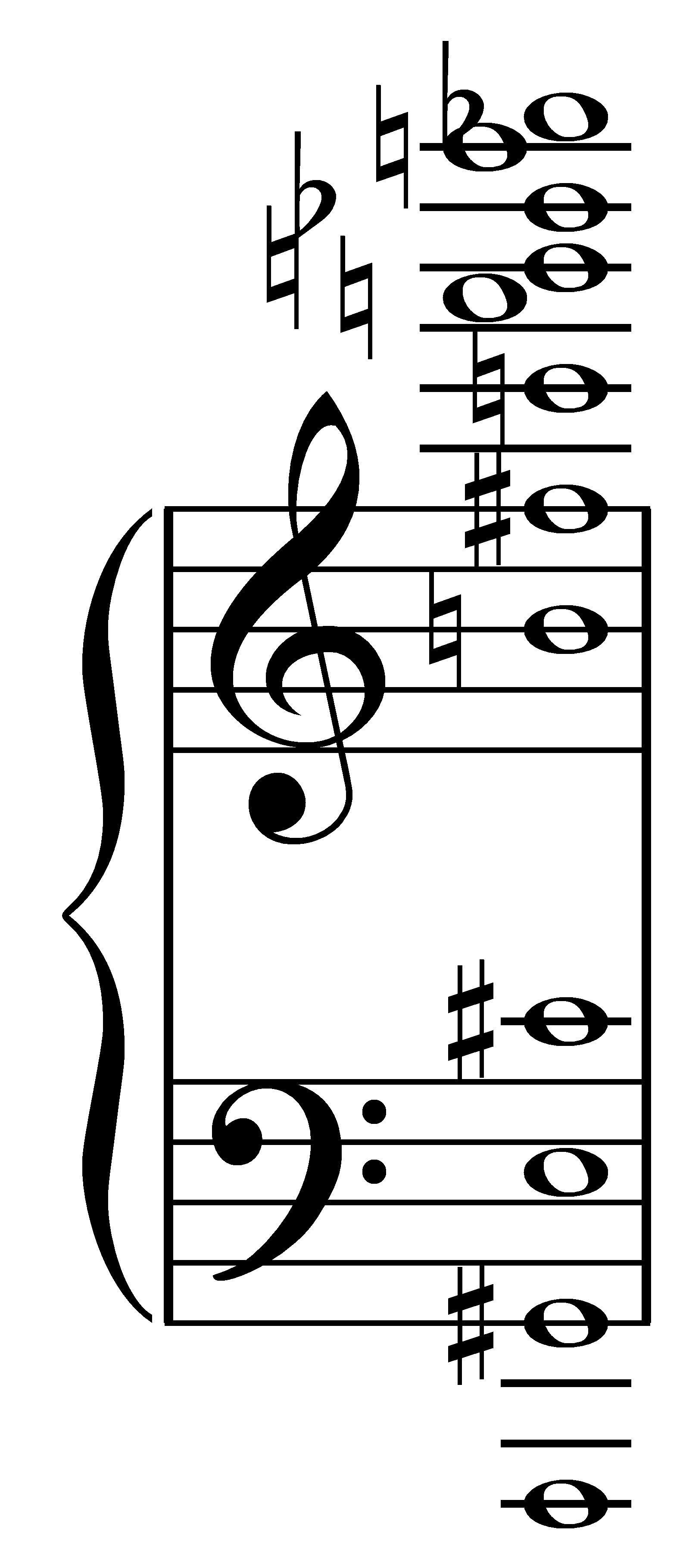KleinPAT: Optimal Mode Conflation For Time-Domain Precomputation Of Acoustic Transfer
ACM SIGGRAPH 2019

Prologue

Fritz Heinrich Klein created the first known all-interval twelve-tone row, the Mutterakkord (Mother chord), for his chamber-orchestra composition Die Maschine in 1921. Mother chord is arranged so that it contains one instance of each interval within the octave. Our KleinPAT algorithm optimally arranges different modal tones of a vibrating 3D object into chords, which are then played together by a time-domain vector wavesolver in order to efficiently estimate all acoustic transfer fields. All together now...
Abstract
We propose a new modal sound synthesis method that rapidly estimates all acoustic transfer fields of a linear modal vibration model, and greatly reduces preprocessing costs. Instead of performing a separate frequency-domain Helmholtz radiation analysis for each mode, our method partitions vibration modes into chords using optimal mode conflation, then performs a single time-domain wave simulation for each chord. We then perform transfer deconflation on each chord’s time-domain radiation field using a specialized QR solver, and thereby extract the frequency-domain transfer functions of each mode. The precomputed transfer functions are represented for fast far-field evaluation, e.g., using multipole expansions. In this paper, we propose to use a single scalar-valued Far-field Acoustic Transfer (FFAT) cube map. We describe a GPU-accelerated vector wavesolver that achieves high-throughput acoustic transfer computation at accuracy sufficient for sound synthesis. Our implementation, KleinPAT, can achieve hundred- to thousand-fold speedups compared to existing Helmholtz-based transfer solvers, thereby enabling large-scale generation of modal sound models for audio-visual applications.
Links
- Paper [high quality (51M)] [compressed (2.3M)]
- Supplemental Video [MP4 (219M)]
- Runtime Demo [MP4 (81M)]
- Presentation [Keynote (1.94GB)] [Slideshow PDF (66MB)] [Poster (31MB)]
- [NEW] Dataset [Link]
- [NEW] Runtime Code [OpenPBSo]
Updates On KleinPAT Benchmarks
Below we showed the improved performance benchmarks (Table 2 in the paper) using a newer graphics card (Gigabyte Geforce RTX 2080 Ti, 2018). The performance was boosted roughly 2-3x out-of-the-box compared to the numbers in the paper, which uses an older generation GPU (Nvidia Geforce GTX Titan X, 2015). This increases the speedup of our GPU-based KleinPAT algorithm to reach over 5000x speedup compared to state-of-the-art parallel BEM solver (Bempp 3.3.4). For comparison details please see the paper.

Citation

Video
Acknowledgements
We thank the anonymous reviewers for their constructive feedback. Toyota Research Institute ("TRI") provided funds to assist the authors with their research but this article solely reflects the opinions and conclusions of its authors and not TRI or any other Toyota entity.
